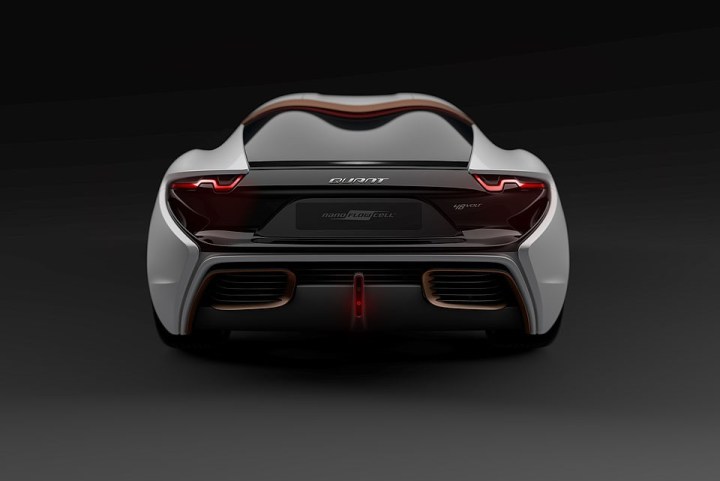
The 48Volt will introduce NanoFlowcell’s next-generation drivetrain, and its performance specifications are downright impressive — at least on paper. Four electric motors join forces to send an impressive 760 horsepower to all four wheels. The concept sprints from zero to 100 kilometers per hour (62 miles per hour) in just 2.4 seconds, and it goes on to a top speed that’s electronically limited to 186 mph.
The drivetrain is new, but it operates in the same way as before. The 48Volt relies on two types of ionized fluids — one with a positive charge, one with a negative charge — stored in separate tanks, to generate electricity. NanoFlowcell explains that ionic fluid is essentially salt in a liquid state, and it’s neither toxic nor flammable.
A single picture of the concept shows a shapely rear end characterized by wide air dams integrated into the bumper, taillights that bear a surprising resemblance to the ones found on the Alpine Vision concept, and a double-bubble roof panel. The proportions suggest the 48Volt is a coupe, but we won’t know for sure until the Geneva show opens its doors next month.
The NanoFlowcell Quant 48Volt sounds like a highly futuristic concept car developed for the auto show circuit, and in many ways it is. However, it might be closer to production than you think.
Last fall, the company announced it was talking with a partner about bringing the technology to production. Details about the deal were few and far between, but founder Nunzio La Vecchia affirmed a salt-powered car — and the network of stations needed to refuel it — could become a reality in just four or five years’ time.




